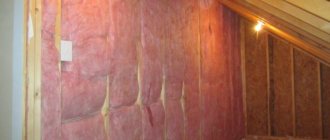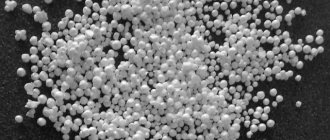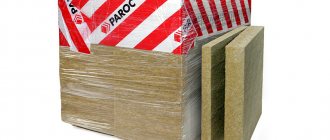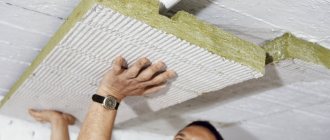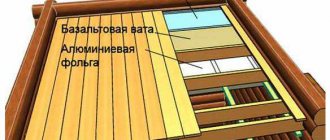Sawdust is waste remaining during the woodworking process and is a mixture of wood shavings and dust. It should be noted their versatility. They are actively used in agriculture, gardening and other areas. In construction, the material is used as insulation.
Its thermal insulation properties have been known for quite some time. Our ancestors also used a mixture of sawdust and clay when building wooden houses.
The world does not stand still. Many materials have been developed as thermal insulation: expanded polystyrene, mineral wool, polystyrene foam, ecowool, foam insulation, etc.
It would seem that the method of insulation with sawdust, as a relic of the past, should have exhausted itself long ago. But even now this is a common method of thermal insulation of premises.
Properties
Wood shavings as an insulating material have a number of positive and negative characteristics.
Among the advantages are the following:
- good thermal insulation qualities, since the resin released by the shavings conducts heat poorly;
- environmental friendliness, sawdust is a natural material, therefore it does not contain harmful chemicals and does not cause allergies;
- low cost, because it is a production waste, many woodworking enterprises give it away almost for nothing.
The main disadvantages of sawdust:
- high fire hazard, ignite very quickly;
- when used in their pure form, they can harbor insects and rodents;
- when exposed to moisture they are susceptible to rotting.
Due to significant disadvantages, sawdust is practically not used in its pure form as insulation. To eliminate possible unpleasant consequences, wood shavings are mixed with lime, clay, cement or gypsum. The resulting mixture is sprayed with vitriol or other antiseptic solution.
As a result, the resulting material burns poorly and also repels rodents and insects.
Insulation characteristics
Sawdust is a waste product from the wood processing industry, which can be purchased for next to nothing at any sawmill. They are of organic origin, and therefore are absolutely safe for human health and do not cause allergies. Sawdust mixed with clay was traditionally used as insulation in Rus'. Since all residential buildings were built from wood, which Russian soil is still rich in, there was a lot of waste left during the construction process, suitable for thermal insulation of attic floors. Sawdust has the following advantages compared to other thermal insulation materials:
- Low price. Perhaps the affordable cost of this material is the main reason for the popularity of sawdust insulation. Sawmills and sawmills dispose of these production wastes, so they often give them to anyone who wants them, subject to pickup. Therefore, the cost of the material is equal to the cost of delivering sawdust to the construction site.
- Guaranteed safety. Wood shavings are absolutely safe for the health of people living in the house. They do not cause toxic poisoning, skin irritation upon contact, or allergies, which cannot be said with certainty about modern insulation materials.
- Low thermal conductivity. Wood shavings, unlike wood, due to their porous structure, have a low thermal conductivity coefficient, that is, they retain heat well. A mixture of sawdust with clay or lime further increases the thermal insulation effect.
- Organic origin. Wood shavings have all the same qualities as wood. It allows steam and air to pass through, which is fundamentally important for insulating houses made of timber and logs with an attic roof.
- Easy to install. It is very easy to work with sawdust; you just need to mix it with clay or lime and then pour it into the space between the floor joists. The technology for laying insulation does not involve the use of special equipment or complex tools.
Thermal insulation of the roof with dry sawdust mixture
Note! The disadvantages of roof insulation with sawdust are the high flammability of this material and low resistance to biological factors. They are a favorable environment for the spread of mold and fungal microorganisms, rodents, and insects. In addition, moisture has an extremely negative effect on sawdust, increasing the thermal conductivity of the insulation several times. To get the maximum effect from thermal insulation of a roof with sawdust, you should pre-treat it with a fire retardant that prevents the spread of fire, as well as with antiseptic preparations.
Insulation mixture
A mixture of wood chips is most often used for insulating low-rise frame or wooden houses. Otherwise it is called “sawdust concrete”. How to prepare sawdust insulation with your own hands?
For this you will need:
- sawdust;
- cement;
- lime;
- wood antiseptic (copper sulfate or boric acid);
- shovel or stirrer;
- watering can;
- mixing container.
Wood shavings should only be taken from woodworking. You cannot use waste from sawing chipboard, MDF, OSB. Such material releases harmful substances into the atmosphere that adversely affect human health.
Fresh raw materials are not suitable for preparing insulation; usually they are allowed to “rest” for at least two months in order to remove the substances that prevent the binding of all components of sawdust concrete.
There are many options for preparing the mixture. They differ in the proportions of the components and the type of binder. Typically the composition includes wood filler, cement, sand or clay.
The cement slowly absorbs moisture from the sawdust, gradually binding the mixture. This insulation is distinguished by its thermal insulation properties and will last for decades.
To obtain a monolithic structure, it is recommended to use gypsum. Since it hardens quickly, small volumes should be mixed.
Composition using lime
To prepare, you need to mix 10 buckets of wood waste with lime and cement (1 bucket each).
After all the components are well soaked, it is necessary to treat the mixture with an antiseptic. Copper sulfate or boric acid is suitable for this.
The antiseptic is mixed with water. For irrigation, you can use a regular watering can. Well-prepared insulation does not release water when squeezed by hand.
Insulation with sawdust and clay
Clay-based sawdust concrete is often used to insulate baths. This mixture has not only excellent thermal insulation properties, but also good waterproofing.
Clay is not afraid of heat and humidity. This method of sawdust insulation is well suited in areas where the climate is prone to sudden changes from low to high temperatures. This material allows you to retain heat in winter and keep cool in hot summer. But the main disadvantage is the fragility of the binder under load, so this composition is mainly used for ceiling insulation.
Materials and tools for preparing the mixture:
- sawdust;
- clay;
- water;
- mixing container;
- a hoe or household concrete mixer;
- molds for making panels (assembled from wooden blocks);
- plywood sheet.
When mixing, it is necessary to strictly observe the proportions of all components. Violation of technology can lead to cracking of the finished material.
For 2-3 buckets of filler you will need one bucket of clay. Before mixing, it is diluted with water to a thick porridge. The amount of liquid depends on the dryness of the clay.
It absorbs moisture very slowly, so it can be stirred periodically to speed up the process. But it is best to soak the clay for several days.
All components are mixed to a homogeneous consistency using a regular hoe or concrete mixer. The mixture is ready to be poured into the ceiling frame from the attic side.
As an option, insulation boards can be made. To do this, it is better to take all components in equal proportions. You must first make a frame of wooden beams with a height of at least 150 mm.
The structure is placed on a sheet of plywood and filled with the prepared solution. The surface should be leveled with a spatula and left until completely dry. To avoid cracks on the slabs, it is not recommended to dry the solution in direct sunlight.
Technology for laying sawdust insulation on the ceiling
After mixing the mixture, the resulting mass is poured from a watering can on top with a solution of copper sulfate or boric acid. Water for the solution is taken at a rate of 5 to 10 liters. Thorough mixing of the mixture and solution should lead to the formation of a dense lump that does not fall apart and does not release liquid when pressed by hand. Before laying, cardboard or glassine is placed over the entire area, then the cement-sawdust mixture is distributed, the solution is compacted into voids and other hard-to-reach places. The insulation should be monitored for two weeks: a good quality of installation is evidenced by the crunching sound when walking and the stability of the layer .
As a ceiling insulation material, sawdust can also be mixed with clay. Five buckets of clay are filled with water and mixed until a homogeneous mass is obtained. Add the clay mixture to the container with wood shavings until the composition becomes homogeneous and medium in thickness . Next, as in the previous version, the surface of the ceiling is covered with a film coating, fixed with a construction stapler, a clay-sawdust solution is applied in a layer of about 5 cm for summer rooms, and up to 12 cm for winter rooms. A few days are enough for drying, after which the cracks are corrected with clay .
Useful: Expanded clay: main characteristics and production features
Thermal insulation of walls
Insulating walls is one of the most effective ways to maintain a comfortable indoor microclimate. Before starting work, you need to take care of fire safety.
For this purpose, the places where the wiring is laid are protected with special non-flammable materials. The wiring should be placed in a metal pipe with a wall thickness of at least 3 mm.
To fill the insulation mixture, a frame is installed, then wooden slats are attached to it, on top of which the sheathing is mounted. Sawdust is poured into the prepared structure and carefully compacted in order to avoid subsidence of the material in the future.
Ceiling protection
Most often, ceiling insulation with sawdust is performed in private homes and outbuildings.
The surface on which the thermal insulation layer will be laid must be prepared. To do this, all cracks are carefully covered with clay. They can also be treated with polyurethane foam. If the building has a chimney, then it must be prepared as well. The area around the chimney is lined with non-combustible materials (slag).
The ceiling is insulated from the attic side. The mixture of sawdust is poured over the entire area, carefully compacted and covered with boards.
Floor
Floor insulation with sawdust has its own specifics and differs significantly from similar work with the ceiling. You should not use the dry mixture method.
Over time, such insulation will shrink, and adding material again will be problematic. Therefore, you should opt for hardening solutions. Mixtures with gypsum and cement work well.
All floor coverings should be treated with moisture-resistant agents and an antiseptic before laying the material. The bottom is covered with a vapor barrier film. Then wood insulation is laid and left to harden. This usually takes from 2 weeks to a month.
Features of insulation for wooden and frame houses
In a wooden house, thermal insulation is carried out on the outside of the load-bearing walls. To do this, supports are installed that will hold the rough facade.
Professional builders recommend using sheet material to avoid spillage of the insulation. Next, you should fill the resulting frame with treated sawdust. In a wooden structure, the layer of thermal insulation should be from 0.5 to 1 meter.
Proper insulation of a frame house with sawdust has its own specifics. Thermal insulation material is poured between the skins of the external and internal walls. When using industrial insulation, a wall width of 15 to 20 cm is sufficient.
But sawdust will not give the desired effect under these conditions. Therefore, it is advisable to do mixed insulation.
The frame is filled with a width of 20 cm, then an additional external one up to 30 cm wide is built and also filled with wood shavings.
Sawdust for insulating walls in a private house, bathhouse and other outbuildings has proven itself to be an excellent thermal insulation, environmentally friendly and inexpensive material that can compete with modern industrial insulation materials.
What type of sawdust insulation to choose
To eliminate the influence of biological factors on the thermal insulation of a house, experts most often turn to proven materials - wood concrete slabs and sawdust concrete. Wood concrete, also known as wood block, is a type of lightweight concrete made from wood chips, cement and a chemical hardener additive. Arbolite slabs for thermal insulation have an average density of up to 500 kg/m³. The thermal conductivity of wood concrete depends on the brand and ranges from 0.08 to 0.17 W/(m °C); a material with a recommended average density of 550 kg/m³ has a thermal conductivity of 0.105 W/(m °C). In terms of biostability, the material belongs to group V, the fire resistance value is from 0.75 to 1.5 hours. The sound absorption coefficient in the range of 126-2000 Hz varies from 0.17 to 0.6.
Sawdust concrete is a building material based on coniferous wood processing waste (sawdust, machine shavings), cement, sand, and quicklime. The density of sawdust concrete starts from 400 and ends with 850 kg/m³, thermal conductivity - from 0.08 to 0.17 W/(m ° C ). In practice, it turns out that the sawdust concrete insulation layer should be twice as thick as the wood concrete slab.
Thus, if you are looking for a lightweight natural insulation material, economical and environmentally friendly, with low heat absorption and good vapor permeability, choose sawdust-based thermal insulation. The insulation is quickly and relatively easily prepared on your own on the day of work on insulating walls, roofs, and floors. We believe that it is not in vain that interest in organic insulation materials is returning.
